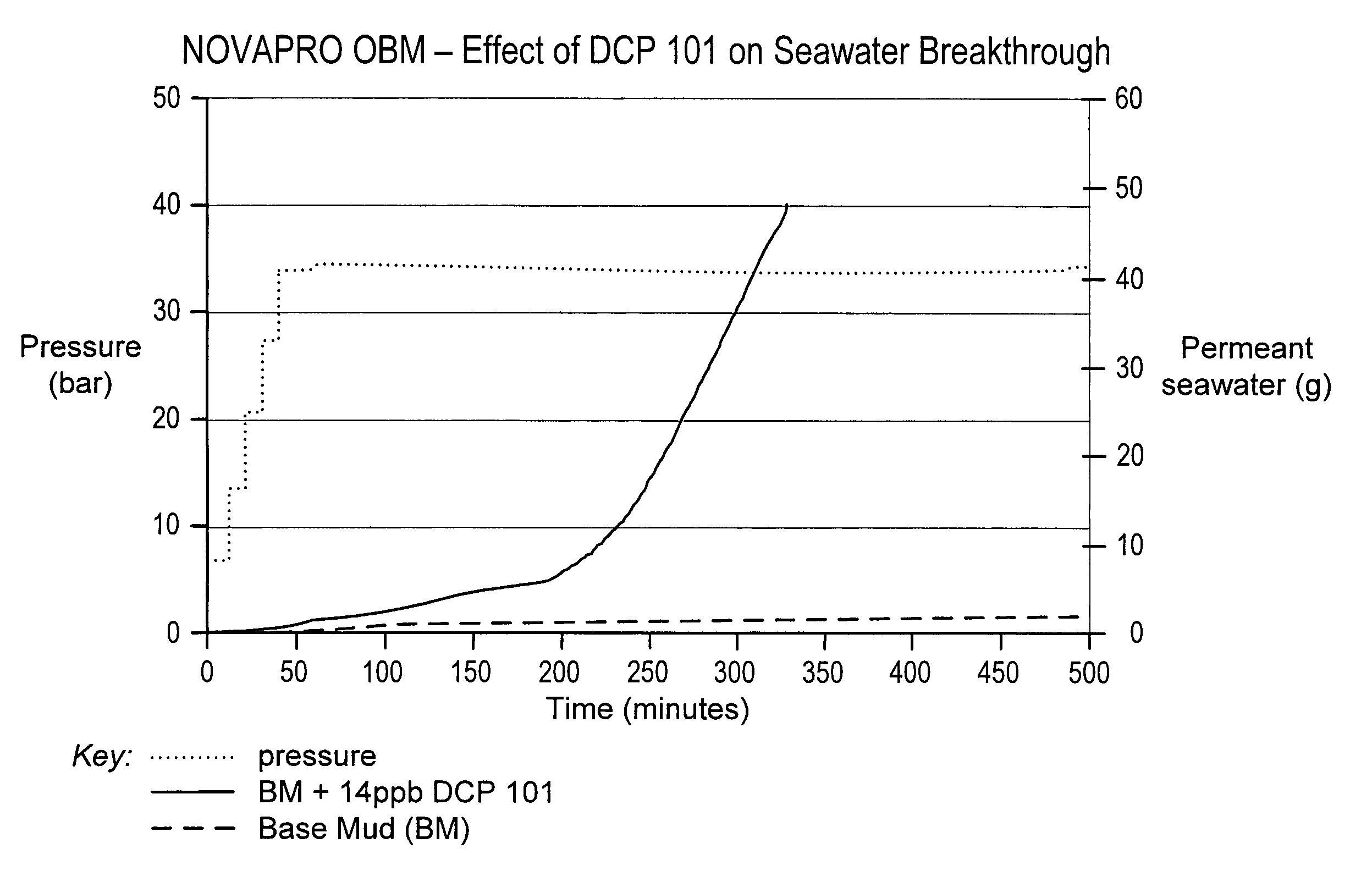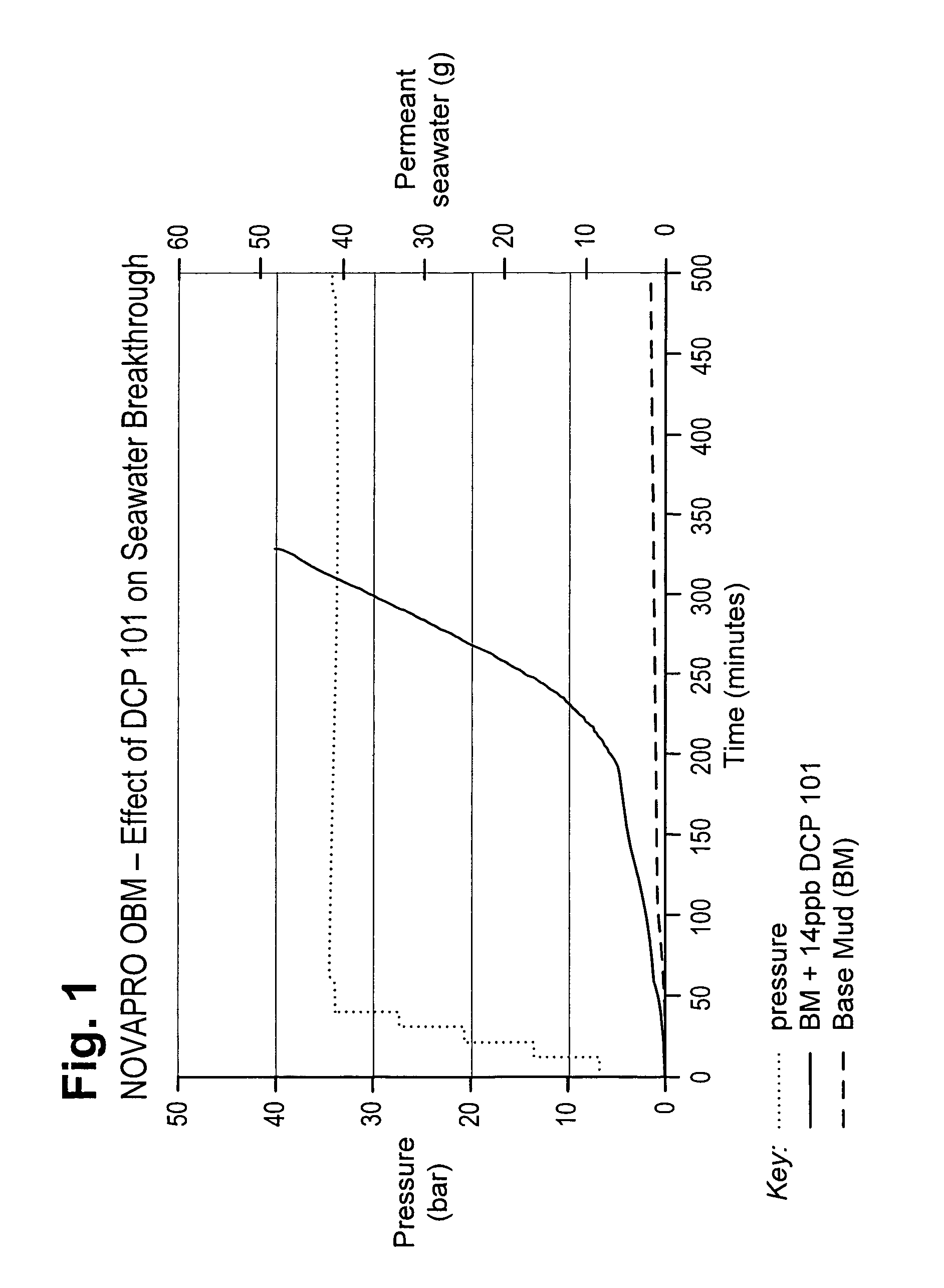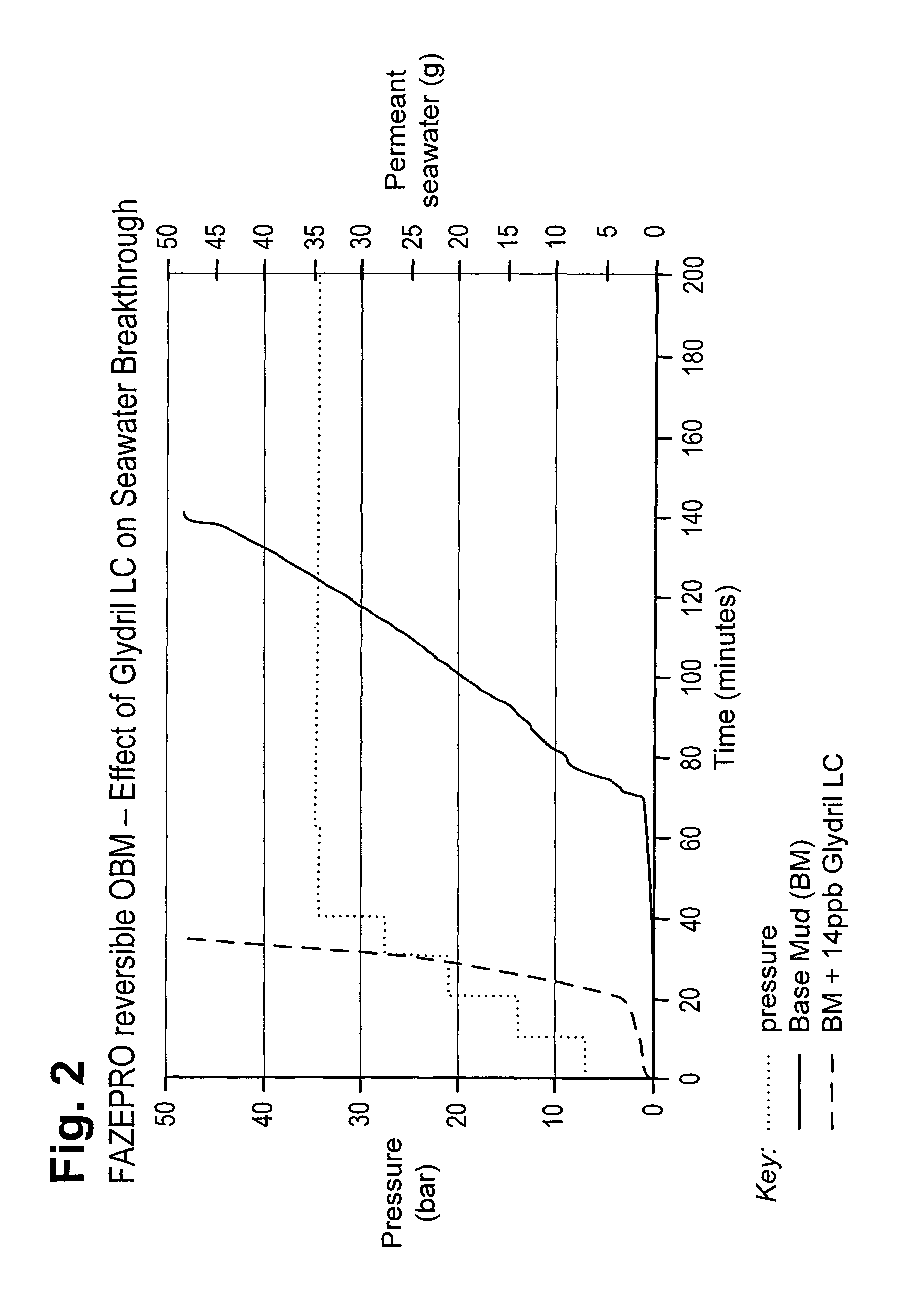Wellbore fluid
a wellbore fluid and fluid technology, applied in the field of wellbore fluid, can solve the problems of reducing affecting the removal rate of the filter-cake, and difficult penetration of seawater into and through the filter-cake during subsequent operations, so as to improve the rate and degree of filter-cake removal, improve the permeability of the filter-cake, and reduce the effect of salinity
- Summary
- Abstract
- Description
- Claims
- Application Information
AI Technical Summary
Benefits of technology
Problems solved by technology
Method used
Image
Examples
example 2
Solubility of DCP 101 in Various Brines
[0072]The solubility of DCP 101 was tested in the following liquids at varying temperatures:
[0073]Synthetic North Sea Seawater
[0076]n-tetradecane
[0077]The brine solutions shown in the table were prepared using deionised water and laboratory grade salts. The % values shown are % by weight of anhydrous salt in the brine. A retained sample of DCP 101 previously available commercially from BP Chemicals was used for the test. A material identical to DCP 101 is now available as BREOX 50A 20S from Cognis.
[0078]Weighed portions of about 50 g of each saline solution were heated in an oven in screw-top glass jars to the temperatures shown, or used at room temperature (22° C.). Small quantities of DCP 101 were weighed into each jar after which the temperature was restored in the oven for 60 minutes. This procedure was repeated until the first development of a hazy / cloudy solution was seen, representin...
example 3
Effects of Adding Polar Organic Liquids on Oil-Based Drilling Fluid Properties
[0082]The purpose of this example is to demonstrate that effective amounts of suitable polar organic liquids can be added to commercial oil-based mud formulations without changing the fluid properties to unacceptable values.
Materials
Amodrill (C12 / 16 / 18) Product of Innovene. Blend of C12-C18 Linear alphaolefins. Base oil for drilling fluid.
Escaid 110 Product of Exxon. Low Toxicity Mineral Oil. Base oil for drilling fluid.
Baroid Alkane. Product of Baroid Fluid Services (division of Halliburton). n-alkane mixture predominantly C12-C16. Base oil for drilling fluid.
Bentone 38 Product of Elementis Specialties. Organophilic clay viscosifier.
GELTONE II. Product of Baroid Fluid Services (division of Halliburton). Organophilic clay viscosifier.
ECOTROL RD Product of M-I Swaco LLC. Fluid Loss Reducing copolymer.
Adapta HP Product of Baroid Fluid Services (division of Halliburton). Fluid Loss Reducing copolymer.
NOVAMUL ...
example 4
Susceptibility of Filter-Cakes to the Permeation of Seawater—Effects of Polar Organic Liquids
[0102]After the HTHP Fluid Loss test had created filter-cakes from the fluids tested in Example 3, the cell was cooled and the pressure-inlet end-cap removed. Excess drilling fluid was drained from the cell leaving the filter-cake intact and undisturbed at the other end. The cell was then filled with seawater, closed and replaced in the heating jacket set at 60° C.
[0103]Upon reaching equilibrium temperature, a top pressure of 100 psi (0.689 MPa) was applied to the seawater for a period of 10 minutes, followed by 10 minutes at 200 psi (1.379 MPa), 10 minutes at 300 psi (2.068 MPa), then 10 minutes at 400 psi (2.758 MPa), and finally 500 psi (3.447 MPa). The 500 psi (3.447 MPa) squeeze was applied for as long as it took for the quantity of seawater (˜50 ml) to permeate through the filter-cake or until it was obvious that no significant break-through of permanent seawater would occur.
[0104]The ...
PUM
| Property | Measurement | Unit |
|---|---|---|
| diameter | aaaaa | aaaaa |
| diameter | aaaaa | aaaaa |
| diameter | aaaaa | aaaaa |
Abstract
Description
Claims
Application Information
 Login to View More
Login to View More - R&D
- Intellectual Property
- Life Sciences
- Materials
- Tech Scout
- Unparalleled Data Quality
- Higher Quality Content
- 60% Fewer Hallucinations
Browse by: Latest US Patents, China's latest patents, Technical Efficacy Thesaurus, Application Domain, Technology Topic, Popular Technical Reports.
© 2025 PatSnap. All rights reserved.Legal|Privacy policy|Modern Slavery Act Transparency Statement|Sitemap|About US| Contact US: help@patsnap.com



